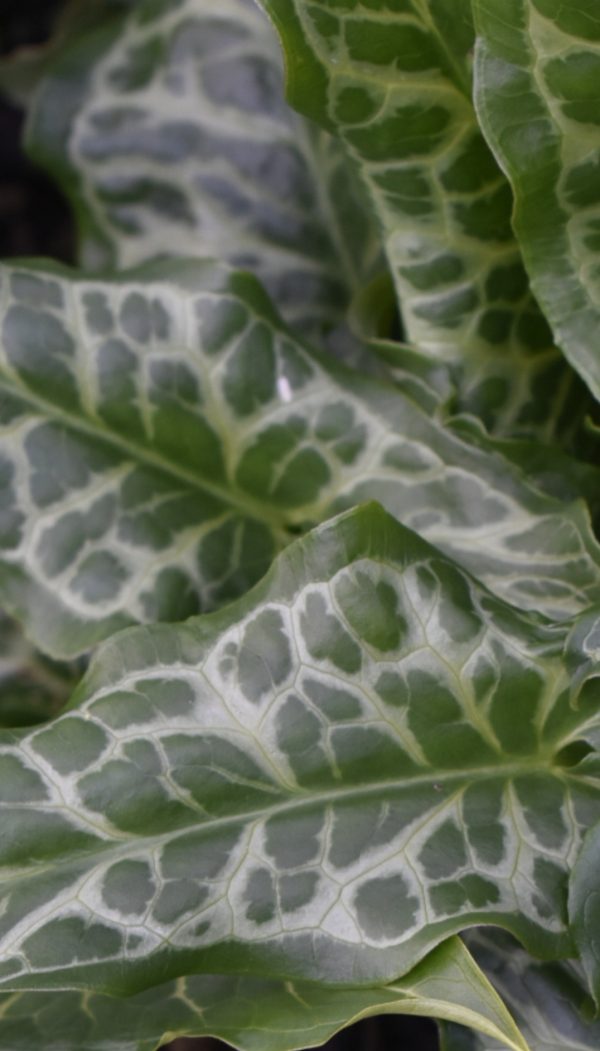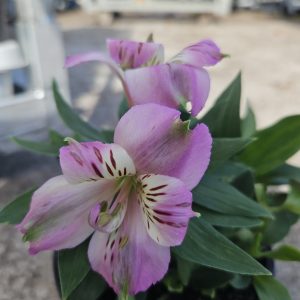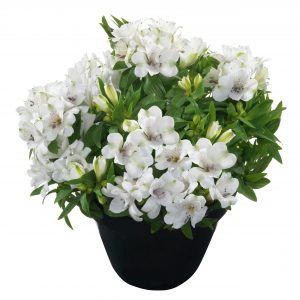Arum italicum
£6.45
A tuberous perennial with arrow-shaped, heavily patterned, white-veined leaves. In early summer, bears greenish white spathes, followed by bright orange-red berries in autumn. Height 30cm. Spread 45cm. Full sun/partial shade. Moist, well-drained, humus-rich soil. Hardy.
Description
Arum italicum, also known as the Italian arum, is a captivating perennial plant that adds elegance and interest to gardens with its striking foliage and unique flowers. If you’re looking to cultivate this beautiful plant in your garden, here’s a comprehensive planting guide to help you achieve success.
PLANTING and AFTERCARE GUIDE
Best Planting Time
- Spring: The best time to plant Arum italicum is in the spring when the soil begins to warm up. Planting in spring ensures the roots have time to establish themselves before the plant enters its growing phase, resulting in a strong and healthy plant.
- Autumn: Alternatively, early autumn is another good time for planting Arum italicum. Planting before the colder weather sets in gives the plant the opportunity to settle in and prepare for a vigorous growth spurt in the following spring.
Site Selection
- Sunlight: Arum italicum thrives in partial shade to full shade. It is best to choose a location where it will receive dappled sunlight or light shade, particularly in areas with hot summers. Too much direct sunlight can scorch its leaves.
- Soil: Arum italicum prefers rich, well-drained soil. While it can tolerate a variety of soil types, it is crucial that the soil does not retain too much water, as the plant does not thrive in waterlogged conditions. To improve drainage, mix in organic matter such as compost or leaf mulch.
Planting Instructions
- Prepare the Hole: When planting Arum italicum, dig a hole that is twice the width of the root ball and about the same depth. This will allow the roots to spread and establish properly in the soil.
- Soil Preparation: Enrich the soil with compost or well-rotted organic matter. Arum italicum appreciates nutrient-rich soil, which will support healthy foliage growth and ensure a strong root system.
- Planting: Place the root ball in the hole, making sure the top of the bulb is level with the surrounding soil. Fill in the hole with soil, gently firming it down to eliminate any air pockets that could hinder root development.
- Watering After Planting: Once planted, thoroughly water Arum italicum. This will help settle the soil and encourage the plant to establish itself. Ensure the area drains well to prevent the roots from sitting in stagnant water.
Watering Requirements
- Growing Season: Arum italicum is moderately drought-tolerant once established, but it does require consistent moisture during the growing season. Water the plant during dry spells, allowing the soil to dry slightly between waterings. Avoid overwatering, as excess moisture can cause root rot.
- Dormant Season: During its dormant phase in the winter months, Arum italicum requires minimal watering. Water only if the soil becomes excessively dry.
Feeding
- Spring: Apply a balanced fertiliser in early spring to give Arum italicum a nutrient boost as it begins its active growing season. This will support strong foliage development and enhance the overall plant’s health.
- Mid-Summer: A light feeding in mid-summer can help maintain the plant’s vigour, especially if the growing season has been particularly dry or if the soil lacks sufficient nutrients.
Pruning
- Deadheading: Remove spent flowers as soon as they start to fade. This will help prevent the plant from wasting energy on seed production and can encourage better overall plant health.
- Autumn Pruning: After the growing season, trim back any dead or damaged foliage. This is important for preparing Arum italicum for winter dormancy and for encouraging fresh growth the following spring.
Mulching
- Spring: Apply a layer of mulch around the base of Arum italicum in the spring. This helps retain moisture, suppress weeds, and regulate the soil temperature as the plant starts to grow.
- Winter: During the winter months, mulch around the plant’s base to protect the roots from cold temperatures. This will help prevent frost heaving and ensure the plant survives the winter.
Supporting the Plant
- Staking: Arum italicum generally has sturdy stems, so staking is rarely necessary. However, if grown in particularly windy areas or if the plant becomes top-heavy with flowers, consider using stakes to prevent any damage.
Final Tips
Arum italicum is a relatively low-maintenance perennial that adds striking foliage and unique flowers to your garden. By planting it in a shaded area with well-draining soil and following the care tips outlined here, you can ensure your Arum italicum thrives year after year. Whether you’re looking for a plant that provides architectural beauty with its arrow-shaped leaves or seeking an intriguing focal point with its elegant spathes, Arum italicum is a fantastic choice for any garden.
Additional information
| Pot Size |
|---|











Reviews
There are no reviews yet.